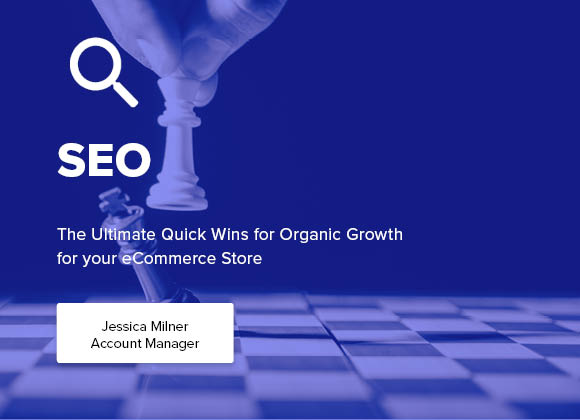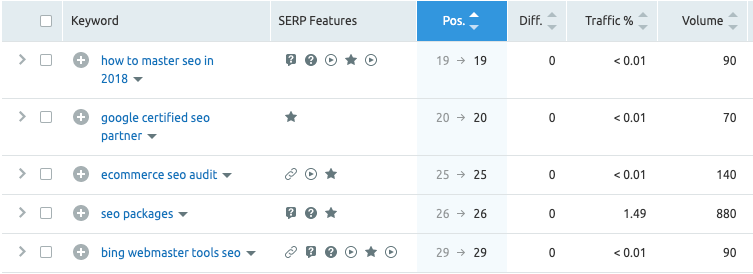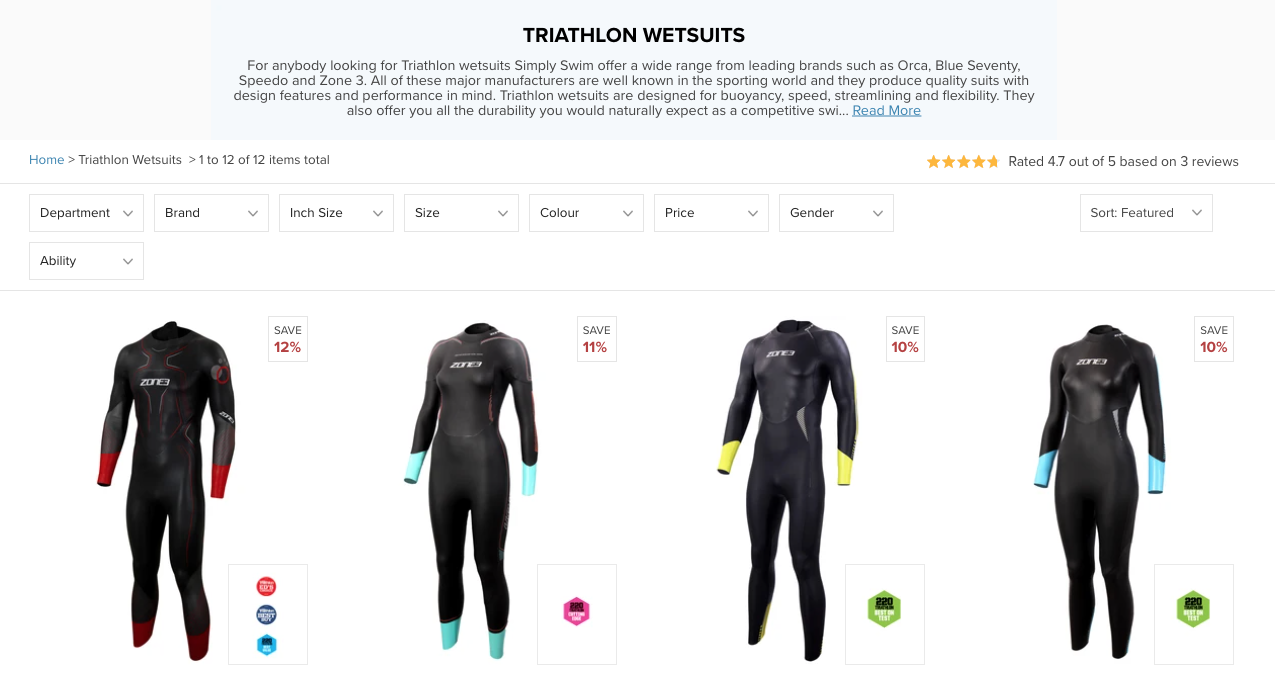Quick wins and marketing are not always something that goes hand in hand.
More often than not, I am telling clients and potential clients that organic marketing takes time. Quality over quantity. You have heard all the cliches.
However, I want to share a few tried and tested approaches to grow your organic growth with you if you are short on time.
I want to put a disclaimer out there, these changes may not revolutionise your business. There is no “one size fits all” when it comes to any marketing approach.
Firstly I want to cover some basics.
What is organic marketing?
Organic marketing is a strategy that generates natural traffic, which tends to increase gradually over time. Organic marketing avoids the use of paid advertising and sponsored posts, for the most part. It typically refers to marketing activities that do not cost money, directly at least, such as blog posts, case studies, guest posts, unpaid tweets and often Facebook updates. This includes email marketing, user-generated content, including reviews (where the user has not been paid to review of course.)
However, although I have just said that, organic marketing does not mean that no money is spent. For instance, you are still going to need to invest in a marketing strategy, any related software and the support of an SEO agency.
Organic refers more to paying to boost the specific post itself.
What do we mean when we say organic growth?
Quite simply organic growth is the improvements of your organic marketing methods, as specified above. This can refer to growth in organic traffic, organic revenue and also growth in organic social media reach.
To Consider
I can’t emphasise enough that organic growth takes time, especially if your business is new. A fresh blog post won’t have much weight behind it, but in the long run, your content marketing activities will build on each other.
What is most important to consider is what success looks like to you. If organic traffic is your primary goal then focusing on SEO & creating guest posts is a great way to grow your audience. If increasing sales through organic is your main KPI then making sure you have a lot of relevant calls to action that direct people to your products, to sign up to be notified when the products are in stock, or to sign up for your newsletter. (There is a revival for email marketing – another blog on this to come).
Quick Win 1
User Experience
It is not rocket science to understand that being on page 1 of Google for a high volume search term takes time. However, there are a few different approaches that can help you to be optimised for those search queries.
Predominantly, these activities have little to do with Google and EVERYTHING to do with your USER EXPERIENCE!!
Within optimising your website for Google, there are four areas that can become quicker wins by making sure the user experience is to the best standard possible.
These four areas are:
1. Optimise Images & Visuals
There are so many ways in which you can optimise your images and visuals. Firstly it is important to make sure that you are using visual elements through your website where relevant. Something to consider here is the use of Infographics when you are talking about information about both your brands. If you are selling a product that needs a demonstration, it may be worth doing demo videos. These can help you to boost your ability to highlight your products by showing rather than telling. Another great way to optimise your images is the use of alt tags. Considered to be an essential factor for the visually impaired to describe what an image is. This helps Google to understand what the image is and can help your image to rank in the Image Search section of Google.
2. Enhance Website Security
When it comes to site security, there are so many risks to take into consideration and I bet one you have not considered is the risk of your search rankings if you experience a cyber attack.
Google does pay attention to your site’s security, which started when they implemented the HTTPS update. If your website is not secure and Google takes notice, your website could be penalised. One thing to consider is that if Google crawls your website and your website has been hacked, your website could be blacklisted. When this happens, potential customers who visit your website will see a notice advising them that “This site has been hacked.” As obvious as this may seem this can damage your business reputation beyond repair. With the potential customer likely to navigate away from your website and look for a similar product elsewhere.
There are a few steps that you can take to make sure that your website is protected and to avoid this negative impact on your reputation and your SEO.
A few things to consider include:
- Make sure you have HTTPS setup
- Install a strong firewall
- Conduct regular testing to uncover potential vulnerabilities
- Use multi-factor authentication for your website logins and even for email
- Install a security plugin
- Update your website regularly
- Use secure logins and passwords for your team (and update them regularly)
3. Speed Up Site Speed
One of my favourite SEO and user experience tools, especially when looking at site speed, is GTMetrix. I speak about how using the report can help with Google’s Update for the Core Web Vitals.
It is just one of the essential tools in our SEO Arsenal. GTMetrix provides vital technical insights about a site’s performance, namely load speed and it breaks it down into actionable steps to use when optimising your website for site speed. It allows UX designers and technical SEO’s alike to extract insights like minifying HTML, CSS, and JavaScript, as well as optimising for caching, images, and redirects.
Site speed is now an important ranking signal, as Google’s overarching mission has been (and will always continue to be) serving users with the best possible experience. In turn, Google rewards fast-loading websites in both Search and Google Ads.
4. Check Broken Links
Links are good and bad for your business. Did you know that having broken links can hurt your site? Broken links littering your pages can make a difficult experience for the user, especially when they are using the site navigation to flow through your products.
Especially if you post a ton of content, it can be easy for broken links to slip past you.
For example, you link out to external posts to provide supporting information to your blog readers. Over time, the owners of the sites you link to may remove posts, or those pages themselves may become broken.
If you have a ton of broken links throughout your content, this can impact your SEO, and it can create a poor user experience.
We use a range of different tools, you can use this for broken links and correct them:
- SEMRush
- Ahrefs
- Dead Link Checker
Quick Win 2
Keywords that you are already ranking for
One of the best ways to gain quick wins for your eCommerce business outside of looking at User Experience is looking at keywords. Specifically looking at keywords that your website is currently ranking for and looking at how you can improve your content and opportunities to support these keywords.
This example is from the eComOne website, using a print screen of data from SEMRush. When we work on client eCommerce SEO we often see keywords that include products that the eCommerce store sells. That might be something high volume, or it could be a longtail keyword.
It is important to consider at this point that volume is not the be-all and end-all. As can be seen in the example, “Google Certified SEO Partner” although that only has 70 searches per month. The searcher is highly educated around what it is they want/need.
Whereas someone searching for “SEO Packages” could be at the very beginning of their SEO journey. Including long-tail keywords in your marketing approach, especially around eCommerce, is essential.
Another example we have with a swimwear client. They rank for the majority of keywords around their products. However, we recently did a deeper dive (excuse the pun) of keywords that they aren’t ranking for. One of these was “men’s blue speedos”. Although this has a low search volume of around 70 searches per month, the searcher is showing high intent, they know exactly what they are looking for.
By looking at the long tail keywords surrounding your brand you can not just get so many more rankings but these keywords are high quality with high search intent.
Quick Win 3
Product Categories
This is an example of a well-optimised product category that has created the perfect space for a search term not to compete with the individual products. The read more tag also adds the perfect opportunity to include more content, without keyword stuffing and there is a lot of internal linking throughout the page.
Content on the product categories is one of the best ways to add information to the page that supports the category. There is always a consideration to be made as to whether you are competing with your product pages and a specific element of this must be considered. However, if you can find a relevant keyword with good volume that does not compete this is a fantastic opportunity for your business.
It is important to consider your industry and niche when it comes to the category and product pages.
However, tread carefully when adding text to category pages. Too much text can distract users from rich product images and take away from the functional simplicity of the page layout.
When it comes to category pages, we continue to revert back to our SEO and UX strategies.
In this instance, it is the debate between :
- Including enough text to effectively target keywords.
- Maintaining a simple, image-focused design.
It is important to use the following when designing and optimising your product categories.
- Optimise internal linking to category pages.
- Avoid keyword stuffing within category pages.
- Build external links to category pages.
- As a short-term solution, make it easier for users to navigate to category pages from product pages.
Aside from the standardised warning against keyword stuffing, the layout of product categories should be very similar to the product page recommendations.
To Conclude
Overall there are a couple of SEO quick wins, which is counterintuitive. However, if you are pushed for time I recommend that you decide on which one you want to prioritise.
One of the most effective ways to understand the opportunities for your eCommerce business is to look at what is working already and find a way to reapply that to your objectives. It is also always worth being aware of the surroundings and your competitors.




